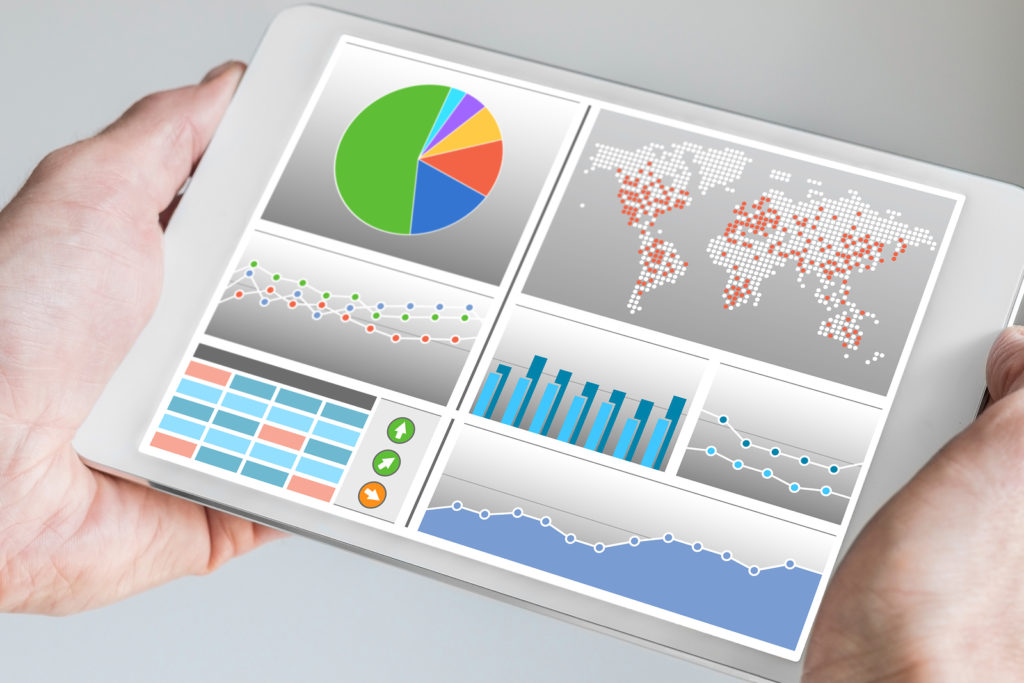
2020 is just around the corner and big data relating to employees is going to be more important and pervasive than ever. Here are 10 top people analytics trends to understand and embrace next year.

#1 PEOPLE ANALYTICS HAS (FINALLY) GONE MAINSTREAM
The importance of People Analytics continues to rise as organizations mine a growing volume of employee data to yield insights to support decision making and drive organizational strategy. Adoption rates are climbing steadily and more mature organizations are leveraging new analytics capabilities, augmented by various forms of artificial intelligence, and applying analytics to a broader range of people policies, including learning and development, performance management, and employee experience. Here’s a look at ten of the top trends dominating this rapidly evolving field.
More than 89% of organizations are now using people analytics in some fashion. That’s according to an OrgVue survey of decision makers from organizations with 1000 employees or more. In fact, according to one recent study, HR has become a more “data-driven” function even than finance.
McKinsey finds that people analytics has come of age: “Five years ago, it was the provenance of a few leading companies…. Now a growing number of businesses are applying analytics to processes such as recruiting and retention, uncovering surprising sources of talent and counterintuitive insights about what drives employee performance.”
Looking at Deloitte’s influential Human Capital Trends report, David Green, a well respected People Analytics thought leader, notes that the discipline is not called out individually as one of 2019’s top ten trends, despite having been joint #1 in 2018.
He writes, “I see this as a sign that the field has matured as data and analytics is central to most if not all of the ten trends identified for 2019.
#2 PEOPLE ANALYTICS HAS A “SKILLS GAP” PROBLEM
Despite the impressive adoption rate, many organizations are struggling to leverage People Analytics effectively. “Most organizations know people analytics is no longer a nice-to-have,” according to OrgVue, “but they don’t have the confidence to make use of data or to begin looking at their workforce in a different way – to consider ‘work and value’ instead of ‘people and cost.’”
What’s the problem? 62% say skills is the biggest barrier to workforce analytics – and the most difficult to overcome.
That may help explain why only 11% of business leaders trust HR to use data to anticipate and help them fill their talent needs, according to Harvard Business Review. As OrgVue puts it, “HR doesn’t see itself as ‘analytical’ but this has to change if the function is to survive.”
On the bright side, employees are more open to learning new skills than their employers typically give them credit for; and Master’s-level HR programs in analytics are popping up all over.
#3 PEOPLE ANALYTICS ARE INCREASINGLY USED TO MEASURE AND IMPROVE THE EMPLOYEE EXPERIENCE
Employee Experience is “THE biggest opportunity for people analytics,” writes David Green. By combining and analyzing both qualitative and quantitative employee data from a variety of sources, organizations are gaining insight into what makes their employees tick.
From “continuous listening” to personas, employee journey mapping, “moments that matter,” sentiment analysis: data-driven customer-centric tools and techniques and mindsets are increasingly leveraged to improve the employee experience.
Results are viewed in terms of improved engagement, well being, performance, and retention — and a boost for the bottom line. According to Accenture, “companies with a highly engaged workforce are 21% more profitable than those with poor engagement.”
#4 PEOPLE ANALYTICS IS ENABLING MORE DATA-DRIVEN AND MORE CONTINUOUS PERFORMANCE MANAGEMENT
The days of the annual performance review are fast receding. Instead, managers are increasingly leveraging real-time data analytics to identify the drivers of employee performance, providing immediate, actionable intelligence to inform feedback, promotions, compensation, skills development, and career pathing.
“The future of performance management is more data-driven, more flexible, more continuous, more development-oriented,” according to the MIT Sloan Management Review.
Tools are proliferating to support this mission. “The solution provider market increasingly recognizes the potential to combine performance management and people analytics capabilities,” notes Deloitte.
#5 CONCERNS ABOUT ETHICS, PRIVACY, AND TRUST ARE GROWING
Organizations and thought leaders in the People Analytics space increasingly recognize the need for strong safeguards against unethical or irresponsible handling of employee data.
As a recent report by Accenture puts it, the vast and ever-growing volume of people data available to organizations “is both a goldmine and a minefield.” A goldmine because it yields insights organizations can tap to unlock the full potential of their people; a minefield due to the “potential for misuse of data: individual rights ignored, employment wrongfully terminated and employees’ skills underutilized.”
If organizations lose employees’ trust,they risk missing out on the benefits of analytics, which may translate to as much as 6% of future revenue growth. And companies that break the EU’s new GDPR rules will face significant financial penalties.
So it’s sobering to read that only 30% of all business leaders are very confident that they are using new sources of workforce data responsibly.
Encouragingly, more companies are hiring “chief ethics officers” or creating “ethical use committees” to evaluate analytics projects.
#6 THE IMPORTANCE OF ORGANIZATIONAL NETWORK ANALYTICS CONTINUES TO INCREASE
ONA, the study of formal and informal relationships and information flows in organizations, is not new. But business leaders are beginning to wake up to its potential. Research by Insight222 found that ONA is the analytical technique that people analytics leaders most want to learn more about.
According to Deloitte, we are “at the tipping point for ONA, where we’re starting to see leaders understand the power of making the previously invisible connections visible through network science and using this to redesign their organizations.”
The same research finds that 90% of companies are exploring data-driven organizational redesign, looking to break down functional silos to better drive innovation, efficiency, and improved performance.
#7 ORGANIZATIONS ARE LOOKING TO HR ANALYTICS TO MOVE THE NEEDLE ON DIVERSITY AND INCLUSION
D&I is a major priority across the business world, yet progress has been sluggish. Therefore, “in an effort to find valid, scalable ways to counteract or reverse bias and promote diversity, organizations are turning to people analytics,” notes Harvard Business Review.
Analytics can be deployed to identify diversity gaps and pinpoint actions that can be taken across the board to drive improvements. Applying analytics in the D&I context is not without risk – algorithms may eliminate some forms of bias only to introduce others, and small sample sizes can present a challenge.
However, the area continues to be a prime focus of analytics efforts, and a growing body of experience suggests that data- driven D&I, when pursued with due caution, can produce results.
#8 AI AND MACHINE LEARNING ARE SUPERCHARGING PEOPLE ANALYTICS
People Analytics “is now evolving at warp speed thanks to various revolutionary technologies such as AI and machine learning,” writes analytics leader Hans Donckers.
Organizations are increasingly applying algorithm-based artificial intelligence to analyze vast volumes of data and accelerate business processes through advanced automation. As a result, they’re significantly cutting the time and resources needed to produce actionable insights.
As people analytics thought leader Josh Bersin puts it, “Yes you need an analytics mindset, but you can now use the data for decisions without spending hours doing statistics.” He continues, “In the old days we had to run reports, generate graphs, and constantly play with the data to understand what’s going on. The new tools in the market today can analyze data for you, point out trends and outliers, benchmark you against peers, and highlight areas of focus.”
#9 RECRUITING REMAINS A TOP FOCUS FOR PEOPLE ANALYTICS EFFORTS
“The recruitment process is a treasure trove of data that — when mined carefully — reveals important information on whether or not a candidate will be the high performing employee your organization is looking for,” writes Ian Cook, who leads the software company Visier.
According to CIPD, 66% of organizations are using people data to help attract and retain high performing/talented individuals. Analytics can provide insight into how well a company’s hiring strategy is working and where there is room for improvement.
#10 ORGANIZATIONS ARE STARTING TO USE PEOPLE ANALYTICS TO “NUDGE” EMPLOYEES TO MAKE BETTER DECISIONS
People Analytics influencer John Boudreau has referred to a “dramatic and fundamental shift is toward systems that “nudge” employees, managers and leaders with suggestions and guidance in the flow of their work.”
This idea derives from the work of Nobel Prize-winning economist Richard Thaler, whose 2008 book Nudge argues that small cues can help people make better choices.
A much heralded example of the practical application of nudge theory is Humu, a company founded by Google alum Laszlo Bock. Humu’s “Nudge Engine” combines analytics and machine learning to prompt employees to take certain actions, producing “measurable improvements in outcomes that matter: retention, innovation, inclusion, productivity, and—most importantly—happiness.”
